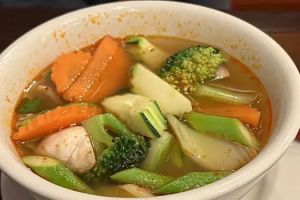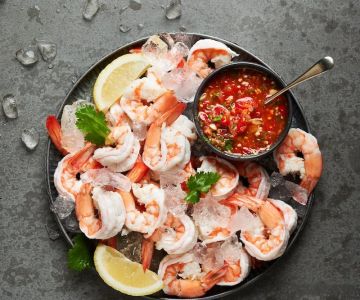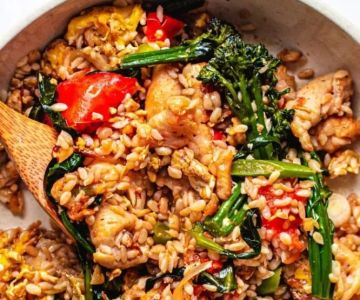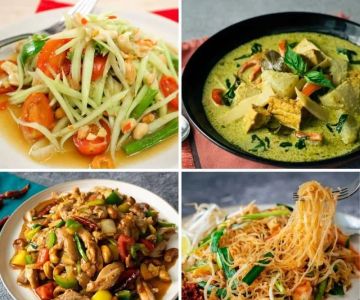
Thai Food Ingredient Spotlight: Holy Basil vs Sweet Basil — What’s the Difference?
- 1. Introduction to Thai Basil Varieties
- 2. Holy Basil: A Sacred Herb with Unique Flavor
- 3. Sweet Basil: The Versatile Herb
- 4. Culinary Uses and Differences in Flavor
- 5. Health Benefits of Holy Basil and Sweet Basil
- 6. Where to Find Holy Basil and Sweet Basil for Your Recipes
1. Introduction to Thai Basil Varieties
When it comes to Thai cuisine, fresh herbs are an essential part of the flavor profile. Among these herbs, basil plays a crucial role, and two varieties stand out in Thai cooking: holy basil and sweet basil. While both basil types may seem similar at first glance, their flavors, uses, and benefits are quite distinct. Understanding the differences between these two types of basil will enhance your culinary creations and deepen your appreciation of Thai food.
2. Holy Basil: A Sacred Herb with Unique Flavor
Holy basil, or Ocimum sanctum, also known as Thai basil or krapao, is often considered sacred in many Asian cultures. This herb has a distinct peppery, spicy flavor with a hint of clove, making it a perfect addition to Thai stir-fries, curries, and soups. Unlike sweet basil, holy basil has a more robust, savory profile that complements bold dishes like Pad Krapow, a famous Thai stir-fried dish with minced meat.
Holy basil’s leaves are often smaller and more textured compared to sweet basil. Its aroma is more pungent and earthy, offering a slight heat that pairs beautifully with garlic and chili. If you're preparing traditional Thai dishes, holy basil is irreplaceable, especially in recipes requiring its distinct spice.
3. Sweet Basil: The Versatile Herb
Sweet basil, or Ocimum basilicum, is the more common basil variety and is widely used in Mediterranean and Thai cooking alike. This basil variety has large, soft leaves and a sweet, aromatic flavor with notes of anise and clove. It’s frequently found in Thai dishes like Thai green curry, Tom Yum soup, and fresh salads.
Sweet basil is milder in flavor than holy basil, offering a refreshing and slightly peppery taste. It adds a delicate sweetness that works well with both savory and sweet dishes. In Thai cuisine, sweet basil is often used as a garnish or in fresh preparations, where its sweet and slightly spicy notes shine through.
4. Culinary Uses and Differences in Flavor
While both types of basil are essential in Thai cooking, their culinary uses differ significantly due to their distinct flavors. Holy basil is used primarily in hot, savory dishes, where its robust and peppery flavor can stand up to rich and spicy ingredients like chili and garlic. It’s most often seen in stir-fries, curries, and rice dishes like the famous Pad Krapow.
On the other hand, sweet basil is perfect for dishes where a milder, more aromatic flavor is desired. It is often used fresh in salads, soups, or as a garnish for dishes like Pad Thai. Its flavor also pairs wonderfully with tropical fruits, adding complexity to fresh and light recipes.
5. Health Benefits of Holy Basil and Sweet Basil
Both holy basil and sweet basil are packed with health benefits, making them great additions to any diet. Holy basil is revered for its medicinal properties, especially in Ayurvedic medicine. It is known to help reduce stress, improve digestion, and even lower blood sugar levels. Its anti-inflammatory and antioxidant properties contribute to overall wellness and immune support.
Sweet basil, though milder in its medicinal effects, is also beneficial. It contains essential oils with antibacterial and anti-inflammatory properties, which can help improve skin health and digestion. Additionally, sweet basil is rich in vitamins A, K, and C, as well as antioxidants that support overall health.
6. Where to Find Holy Basil and Sweet Basil for Your Recipes
If you’re looking to incorporate these herbs into your cooking, you’ll need to know where to find them. While sweet basil is easily available at most supermarkets, holy basil can be a little harder to find. For holy basil, try visiting specialty Asian markets, or look for it at local farmers' markets that carry fresh Thai herbs.
You can also grow your own holy basil and sweet basil at home, as both varieties thrive in warm climates and require plenty of sunlight. Alternatively, you can purchase dried holy basil or frozen basil at certain stores if fresh basil is unavailable.
7. Closing Thoughts
Whether you’re making a traditional Thai stir-fry or experimenting with new recipes, understanding the difference between holy basil and sweet basil will help you create more authentic and flavorful dishes. Both basil varieties have unique properties that enhance the complexity of Thai cuisine, so next time you cook, try experimenting with both! Check out Thai Food for authentic ingredients and tools to help make your cooking experience even better.









 Bangkok House Authentic Thai Restaurant4.0 (365 reviews)
Bangkok House Authentic Thai Restaurant4.0 (365 reviews) Saap4.0 (355 reviews)
Saap4.0 (355 reviews) Sen Yai Thai Noodles4.0 (92 reviews)
Sen Yai Thai Noodles4.0 (92 reviews) House of Thai4.0 (526 reviews)
House of Thai4.0 (526 reviews) Thai All Seasons4.0 (266 reviews)
Thai All Seasons4.0 (266 reviews) Morris Thai Cuisine4.0 (424 reviews)
Morris Thai Cuisine4.0 (424 reviews) Thai Food Ingredient Spotlight: Dried Kaffir Lime — What & How
Thai Food Ingredient Spotlight: Dried Kaffir Lime — What & How The Best Thai Food Recipes for Minimal Ingredient Cooking
The Best Thai Food Recipes for Minimal Ingredient Cooking The Best Thai Food Restaurants in Los Angeles According to Locals
The Best Thai Food Restaurants in Los Angeles According to Locals Best Thai Food Restaurants in Richmond for Authentic Thai Cuisine
Best Thai Food Restaurants in Richmond for Authentic Thai Cuisine How to Make Thai Papaya Salad (Som Tum) at Home
How to Make Thai Papaya Salad (Som Tum) at Home Discover the Best Thai Food Restaurants in Kansas City for Hidden Gems
Discover the Best Thai Food Restaurants in Kansas City for Hidden Gems